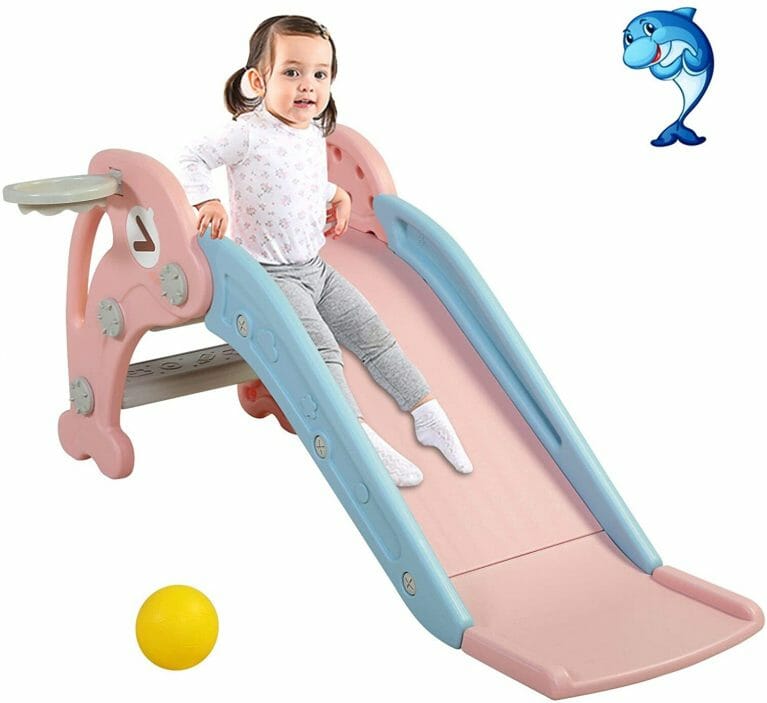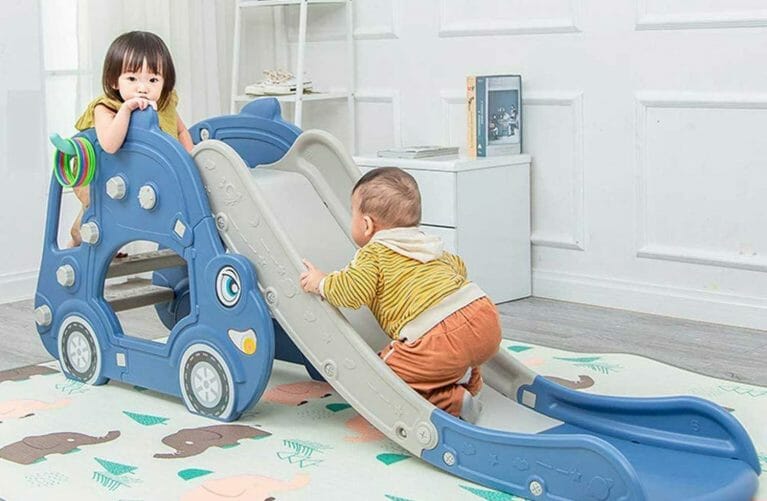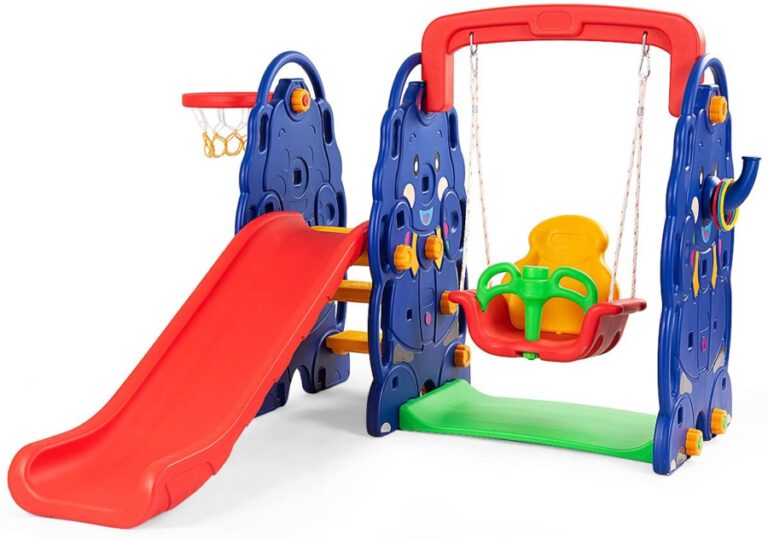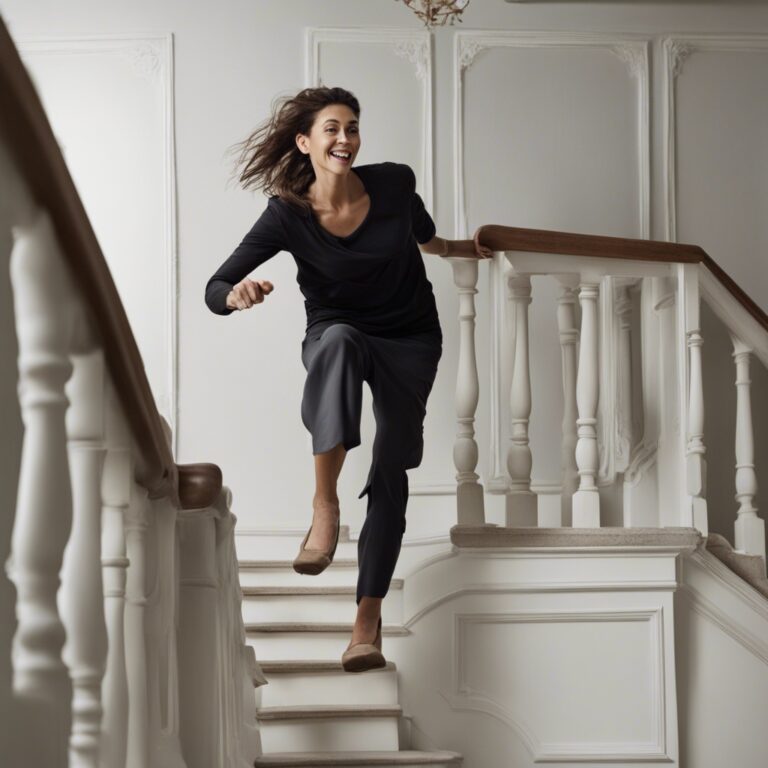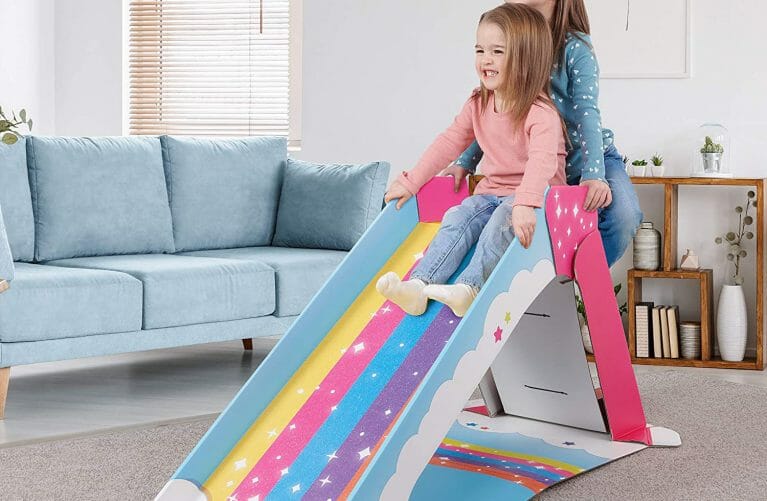The Art of DIY Stair Slides: Creative Ideas for Parents and Kids
Introduction
Keeping kids entertained indoors can be a real challenge for parents. But have no fear – DIY stair slides are here! Transforming your stairs into an exciting slide is a creative way to get your kids laughing, moving, and bonding with the whole family. In this video, we’ll explore some of the best household items for building customized slides that match your space and stir up hours of giggles. Get ready for the art of stair slides!
Key Takeaways
- DIY stair slides are a fun family project that can benefit both kids and adults.
- Building a safe and fun stair slide requires specific materials and a step-by-step guide.
- Decorating and customizing your stair slide can add a personal touch to your creation.
- Safety precautions should be taken when using a stair slide, including adult supervision and proper maintenance.
- Incorporating a stair slide into your home design can add a unique and playful element to your space.
Chapter 1: Benefits of Indoor Stair Slides
Fun Family Bonding Activity
Collaborating to create a stair slide is a hands-on way for parents and kids to work as a team. The process sparks innovation and problem-solving skills in kids while making lasting memories. Kids can take the lead in planning and gathering materials while parents provide supervision. Laughing down the slide you built together deepens family connections. The whole process – from conceptualizing to testing – is an engaging bonding experience.
Promotes Physical Activity
Sliding engages muscles in kids’ core, arms, and legs while developing balance and coordination. Gripping the slide surface works arm strength. Climbing the stairs repeatedly to slide again is great for endurance and cardio fitness. The excitement of climbing back up to slide again keeps kids moving even when stuck inside on rainy days. Stair slides are a fun way to incorporate physical activity into indoor playtime.
Spark Imagination and Innovation
The open-ended challenge of repurposing household items for slides boosts creativity in kids and parents. Brainstorming materials gets the innovating juices flowing. Letting kids take the lead in materials selection and structural engineering decisions empowers imaginative thinking and resourcefulness. The final product will be a unique, custom creation made just for your family and staircase.
Chapter 2: Materials for DIY Stair Slides
Cardboard Boxes
Flattened large appliance or furniture boxes work perfectly as smooth slide surfaces. Their large size provides enough surface area for kids to slide. For padding, line the slides with pillows, blankets, or foam to cushion the ride. Ensure edges are securely taped and reinforce seams with packing tape.
Furniture Movers
Plastic furniture movers make slick tracks to reduce friction. Their slick surface enables speed. Simply cut movers to fit the width of your stairs using sharp scissors or box cutters with parents’ assistance. Adhere movers to stairs temporarily with double-sided tape.
Pool Noodles
Tie pool noodles together to soften slides and extend them longer. Their bright colors and soft textures make slides more thrilling. Just make sure to securely tie them together so there are no gaps. Layer noodles over harder surfaces for cushion too.
Chapter 3: Safe Set Up
Clear Debris
Ensure slides pathways are clear of clutter like toys and debris. Check corners for sharp edges and pad areas as needed to prevent injury. Define a clear slide zone and keep it free of obstructions.
Secure Entry Points
Use barriers like baby gates to help smaller kids safely access the slide entry point. Have spotters assist children climbing up and down. Closely monitor children and assist to prevent falls. Ensure kids take turns to prevent collisions.
Rule Out Hazards
Keep stairs clear as emergency exit routes in case of emergency. Scan for potential dangers like low ceilings or railings in the slide’s path. Check lighting to make all areas visible. Address safety concerns before sliding. An adult should inspect first before opening the slide for kid use.
Materials Needed for Building a DIY Stair Slide
To build a DIY stair slide, you will need several materials. These include plywood or MDF boards for the slide surface, screws or nails for securing the boards, foam padding or carpeting for added safety and comfort, and a sturdy handrail for support. You may also need tools such as a saw, drill, measuring tape, and sandpaper.
These materials can be easily found at your local hardware store or online retailers specializing in DIY supplies. It’s important to ensure that you choose high-quality materials that are safe and durable. Consider consulting with an expert or doing thorough research to find the best options for your specific needs.
Step-by-Step Guide to Building a Safe and Fun Stair Slide
| Step | Description |
|---|---|
| 1 | Measure the length and width of the stairs to determine the size of the slide. |
| 2 | Choose a slide material that is safe and durable, such as plastic or metal. |
| 3 | Install the slide securely to the stairs using screws and brackets. |
| 4 | Add padding to the slide and surrounding area to prevent injuries. |
| 5 | Test the slide for safety and make any necessary adjustments. |
| 6 | Supervise children while using the slide to ensure they are using it safely. |
Building a DIY stair slide requires careful planning and execution to ensure safety and enjoyment. Here is a step-by-step guide to help you through the process:
1. Measure your staircase: Begin by measuring the dimensions of your staircase to determine the size of the slide you will need. Take into account the length, width, and height of the stairs.
2. Design your slide: Use your measurements to create a design for your stair slide. Consider the angle of descent, the curve of the slide, and any additional features you want to incorporate.
3. Gather materials: Purchase all the necessary materials listed earlier, ensuring they are of high quality and suitable for your design.
4. Prepare the stairs: Clear the staircase of any obstacles or loose carpeting. Sand down any rough edges or splinters on the stairs to ensure a smooth surface.
5. Build the slide structure: Construct the frame for the slide using plywood or MDF boards. Secure them tightly to ensure stability and safety.
6. Install the slide surface: Attach the slide surface material, such as plywood or MDF boards, to the frame using screws or nails. Make sure it is securely fastened and smooth.
7. Add safety features: Install foam padding or carpeting along the sides of the slide to provide cushioning and prevent injuries. Ensure that there are no sharp edges or protruding nails.
8. Install a handrail: Attach a sturdy handrail along one side of the stairs for added support and safety while using the slide.
9. Test for safety: Before allowing anyone to use the stair slide, thoroughly inspect it for any potential hazards or loose parts. Test its stability and ensure that it can support the weight of users.
10. Enjoy your DIY stair slide: Once you are confident in its safety, let the fun begin! Encourage your family members to try out the slide and enjoy the excitement it brings.
Conclusion
Custom-built indoor stair slides made from household items check all the boxes for kid entertainment. Slides spur family bonding, increase activity, and inspire innovation in cheap, easy projects. The preparation builds teamwork while the sliding creates laughs. Match slide materials to the stairs, interests, ages and abilities unique to each child. Laughing down the DIY slide you created together makes unforgettable family memories!
Closing Remarks
The best slides match the stairs, interests, ages, and abilities unique to each child. Customize these general guidelines to invent new sliding adventures that best suit your family. Most importantly, embrace the laughter and silly moments only possible through cooperative indoor play. Let the sliding fun begin!

